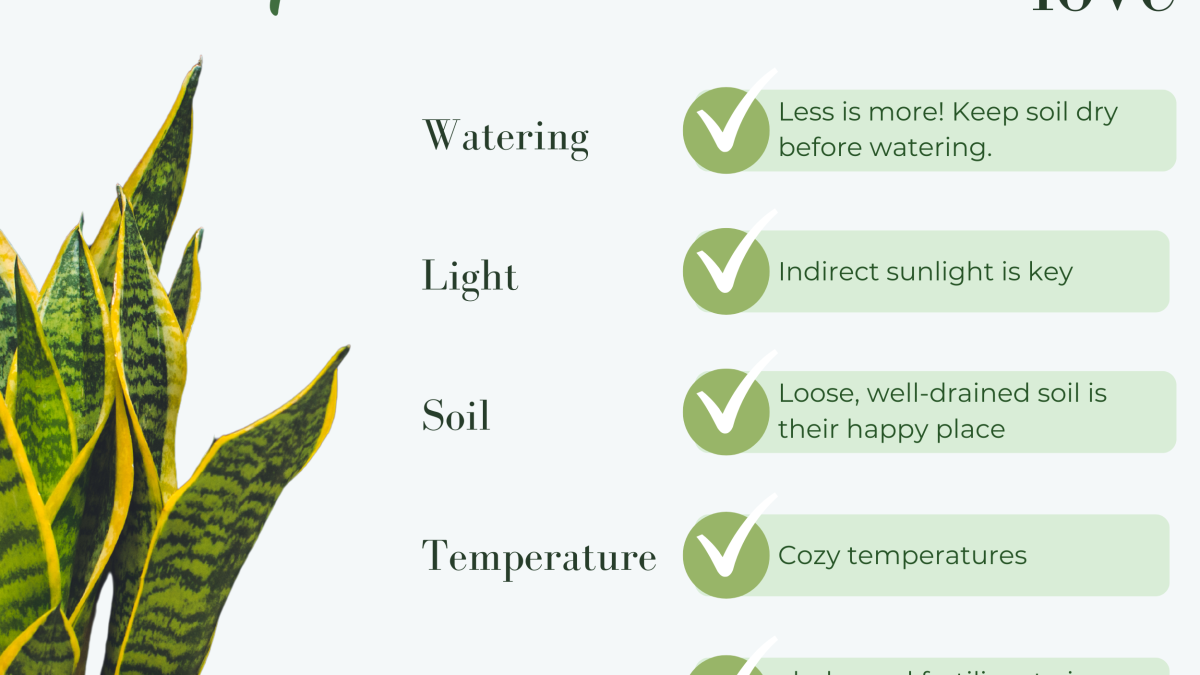The Ultimate Guide to Growing and Caring for Snake Plants

Pest Control Services in Jaipur – Keep Your Home & Business Pest-Free
March 4, 2025
Best Flowering Plants for Homes
March 22, 2025The Ultimate Guide to Growing and Caring for Snake Plants
Snake Plants (Dracaena trifasciata) are one of the easiest and most rewarding houseplants to grow. Their striking, upright leaves bring a modern aesthetic to any space, while their resilience makes them perfect for even the most forgetful plant owners.
Not only do they thrive in a variety of conditions, but they also purify the air, filtering out toxins and improving indoor air quality. While they’re low maintenance, a few simple care steps will help them thrive for years to come.
Top Three Rules Caring for Snake Plants
1. Water Wisely
Caring for Snake Plants : Snake Plants are drought-tolerant and highly susceptible to overwatering. Water only when the soil is completely dry, typically every two weeks, reducing this frequency in winter.
2. Keep Away from Pets and Children
These plants contain toxic compounds that can cause irritation if ingested. Keep them out of reach of curious pets and small children.
3. Choose the Right Soil
A well-draining, slightly sandy mix, such as a cactus or succulent potting blend, is ideal for healthy root growth and preventing rot.
Choosing the Right Snake Plant Variety
There are many striking Snake Plant cultivars to choose from:
- ‘Black Coral’ – Deep green foliage with silver-grey stripes.
- ‘Black Dragon’ – A compact variety with dark, glossy green leaves.
- ‘Golden Flame’ – Features dramatic yellow-edged leaves.
- ‘Hahnii’ (Bird’s Nest Snake Plant) – A small, rosette-shaped variety reaching about 20 cm (6-7 inches).
- ‘Laurentii’ – Tall with prominent yellow leaf margins, reaching up to 60 cm (24 inches).
- ‘Metallica’ – Silver-green leaves with subtle striping.
- ‘Moonshine’ – Light green leaves with dark green margins, giving it a unique glow.
For a slightly different look, Dracaena cylindrica (African Spear Plant) offers cylindrical leaves that require a bit more frequent watering.
Best Growing Conditions for Snake Plants
1. Light Requirements
Snake Plants adapt well to a range of light conditions, from low light to bright, indirect sunlight. However, brighter conditions will enhance their leaf variegation. Keep them away from harsh, direct sun to avoid scorched leaves.
💡 Pro tip: Wipe leaves occasionally to remove dust and maximize light absorption.
2. Temperature & Humidity
They prefer temperatures above 10°C (50°F) and are highly tolerant of dry air, making them perfect for indoor spaces. Avoid placing them in cold drafts or prolonged exposure to freezing temperatures.
3. Feeding & Fertilization
Feed with a diluted houseplant fertilizer once a month during the growing season (spring and summer). No fertilization is needed in winter.
Propagating Your Snake Plant
The easiest way to propagate Snake Plants is by division:
- Gently remove the plant from its pot.
- Using a sharp, clean knife, cut away a leaf with part of its root.
- Plant it in a fresh, well-draining potting mix.
- Water sparingly and place it in a bright, indirect light spot to establish.
You can also propagate by leaf cuttings in water or soil, though this method takes longer.
Repotting Your Snake Plant
Snake Plants grow slowly but will eventually need a larger pot when roots outgrow the container. Signs it’s time to repot include roots pushing through drainage holes or the plant becoming top-heavy.
Steps to Repot:
✔ Select a pot 1-2 inches larger than the current one.
✔ Use a well-draining potting mix, such as a cactus or succulent blend.
✔ Spread the roots gently and place the plant in the new pot.
✔ Add soil around the base, pressing lightly to secure.
✔ Water sparingly and allow the plant to adjust to its new home.
Common Issues & How to Fix Them
1. Yellowing or Mushy Leaves
❌ Cause: Overwatering and root rot.
✅ Fix: Let the soil dry completely before watering again, and ensure the pot has drainage holes.
2. Wrinkled or Dry Leaves
❌ Cause: Underwatering.
✅ Fix: Water thoroughly, allowing excess water to drain out.
3. White Fuzzy Patches on Leaves
❌ Cause: Mealybugs.
✅ Fix: Wipe with a cotton swab dipped in alcohol and use an insecticide if necessary.
4. Brown or Red Spots on Leaves
❌ Cause: Fungal infections or red leaf spot.
✅ Fix: Improve air circulation, remove affected leaves, and apply a fungicide.
5. Jagged Edges on Leaves
❌ Cause: Vine weevils feeding on the plant.
✅ Fix: Remove pests manually and use an insecticide if needed.

